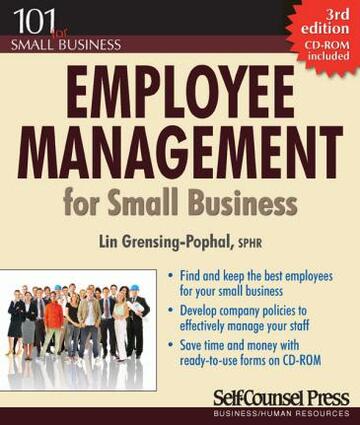
Employee Management for Small Business
La description
Whether a business has 1 or 100 employees, Employee Management for Small Business provides the tools and knowledge required to take an active and positive approach to maintaining an effective human resources plan. Finding and keeping good employees is crucial to the success of every business, but it’s not easy. This book will show small-business owners how to develop a human resources plan tailored to their needs.
Finding and keeping good employees is crucial to the success of every business, but it’s not easy. This book will show small-business owners how to develop a human resources plan tailored to their needs.